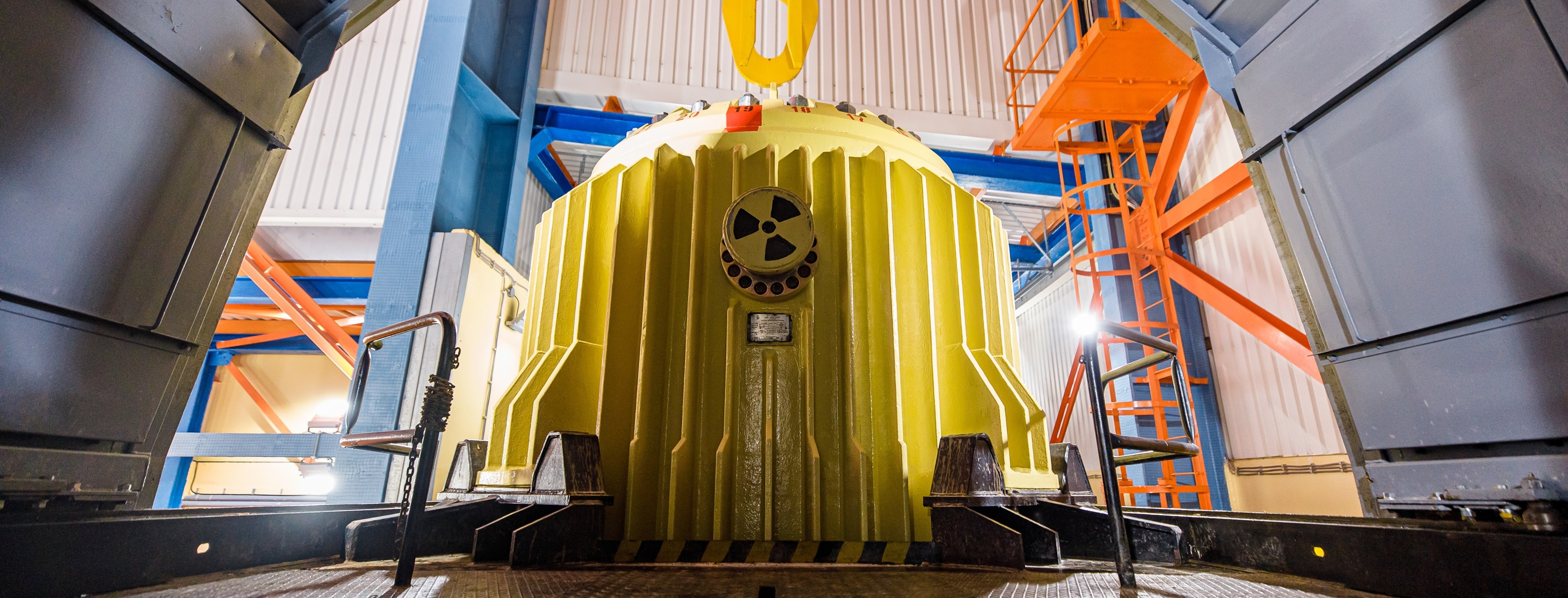

The content of this page will be updated soon.
Spent fuel management
There are different approaches to safely manage irradiated fuel produced by nuclear power plants. One is an open fuel cycle, when spent fuel assemblies are disposed of in a deep geological disposal facility, without any reprocessing. Another approach is the partially or fully closed fuel cycle, which entails the reprocessing of the fuel assembly and recycling of the plutonium and uranium. The third option is temporary disposal of the fuel assemblies in interim storage facilities, while a substantiated decision is reached in regard of their reprocessing or final disposal.
Interim storage is not optional, whichever spent fuel management method is chosen. Due to technical reasons, in the preparatory phase of spent fuel management, temporary storage is necessary. During this period radiation and heat emission of the assemblies decreases significantly, which in turn makes later fuel management activities easier.
The Spent Fuel Interim Storage Facility (SFISF)
One consequence of operating a nuclear power plant is the production of irradiated (spent) fuel, besides low and intermediate level radioactive waste. These irradiated fuel assemblies require special treatment and disposal. After the spent fuel assemblies are removed from the reactors of the Paks nuclear power plant, they are placed under water for a resting period into the so-called spent fuel pool. At this time no nuclear reaction takes place, only radioactive fission produces remanent heat. The length of the resting period is determined by the actual capacity of the spent fuel pool. After an average resting period of 3-5 years the assemblies are transported to the Spent Fuel Interim Storage Facility (SFISF).
The facility is located next to the site of Paks nuclear power plant, to the south. The facility is in Tolna county, 5 kilometres south from the town of Paks, between route 6 and the Danube river. For transport, spent fuel assemblies are placed in a water-filled transport container. After decontamination of the container surface, the transport container is delivered to SFISF via railway carriage. The capacity of the transport cask is maximum 30 spent fuel assemblies.
The SFISF facility is of a modular design, where spent fuel assemblies are stored under dry conditions, in storage vaults. The facility is an overground facility, where fuel assemblies are removed from the transport cask, dried with special equipment, then are place - one by one - into hermetical steel tubes. Special vaults house these vertical steel tubes, where the nearly 2 metres thick reinforced concrete walls provide sufficient shielding. The facility has a dry storage design, where remanent heat is removed by natural ventilation. Thus, electric or other technical malfunctions cannot adversely affect the cooling of the fuel assemblies. The cooling air travels around the steel tubes; therefore, it does not get into direct contact with the assemblies themselves. The steel tubes contain neutral nitrogen, which is kept at constant pressure.
During the design of the building, besides radiological and cooling aspects, special attention was paid to seismic protection and ground water protection as well. The design basis for the Spent Fuel Interim Storage Facility prevent the facility from ever becoming flooded. The seismic design basis is 0.35G maximum horizontal acceleration for 10000 years frequency, as specified by the nuclear regulator. The alarm systems of the SFISF are synchronized with the alarm systems of the nuclear power plant. The site falls under the restricted flying space at 3 km radius and 5950 m height.